We rocked up to Chengdu in China’s Sichuan province with very few expectations. The city’s reputation of being grey, hazy, and indistinguishable, made us rather unenthusiastic about spending any serious time there.
*This post may contain affiliate links, as a result, we may receive a small commission (at no extra cost to you) on any bookings/purchases you make through the links in this post. As an Amazon Associate, we earn from qualifying purchases. Read our full disclosure
But as it turns out, there are plenty of things to do in Chengdu, and it’s conveniently located near some pretty unique sights and attractions in southwest China, so we decided to bite the bullet and make our way to one of the most populous cities in Western China.
The city had a lot of great surprises for us up its sleeves.
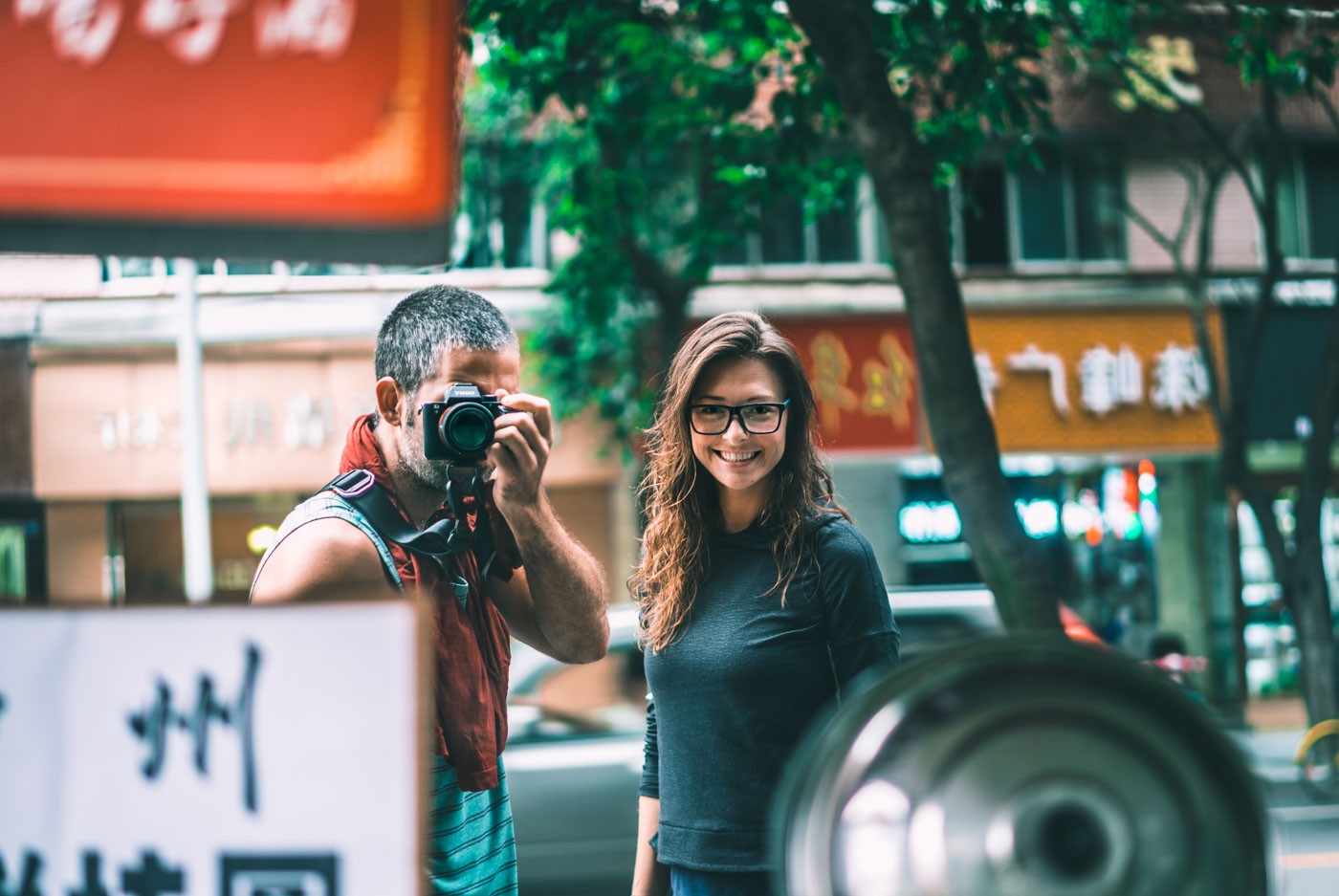
Traveling Soon? Here is a list of our favourite travel providers and accessories to help get you ready for your upcoming trip!
Small Town Atmosphere
Arriving in Chengdu was so much smoother than arriving in Beijing or Shanghai. The city is not small. With over 15 million people living in its urban area, Chengdu is one of China’s 5 top largest cities, but for some reason, it didn’t feel big. People in Chengdu seemed happier, more relaxed, more in tune with their surroundings and with each other. And to our greatest surprise, even more willing to help despite our terrible Mandarin!
The Chengdu city centre, which is encircled by the 1st Ring Road, was small enough to explore on foot or, at the very least, by bike. The metro system was also easy to navigate, offering an eco-friendly and affordable alternative to taxis (although even the taxis here were hybrid). Unlike Beijing or even Shanghai, getting around Chengdu wasn’t a daunting task, so we were able to explore more without getting frustrated and exhausted by the commute.
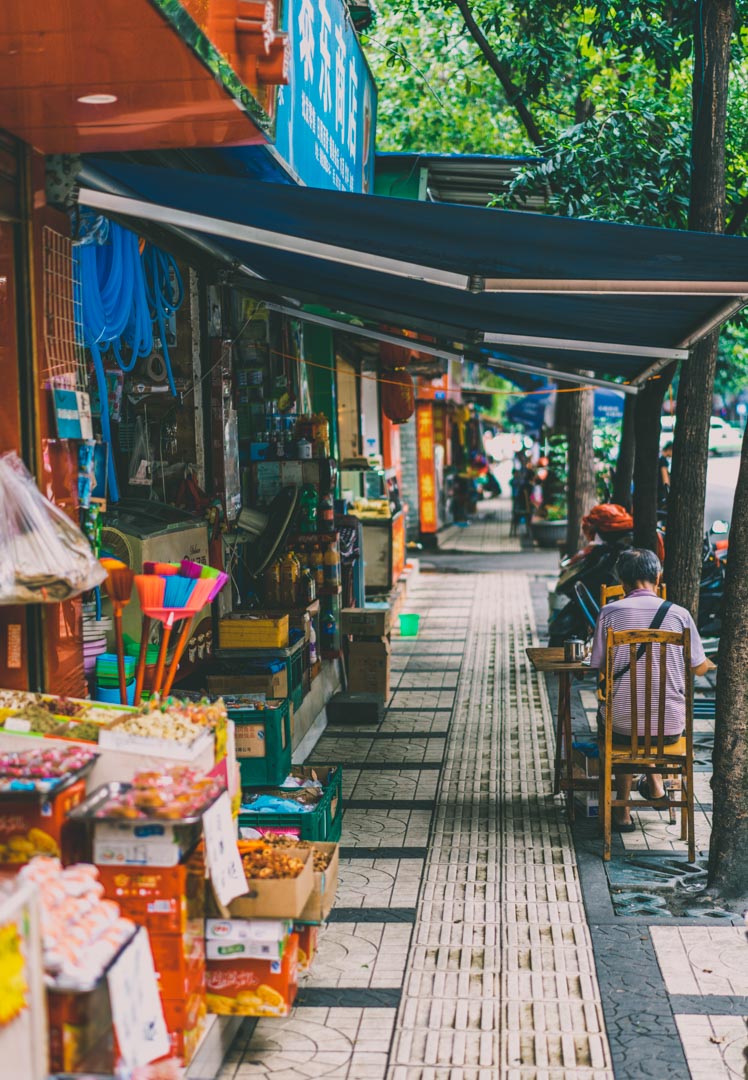
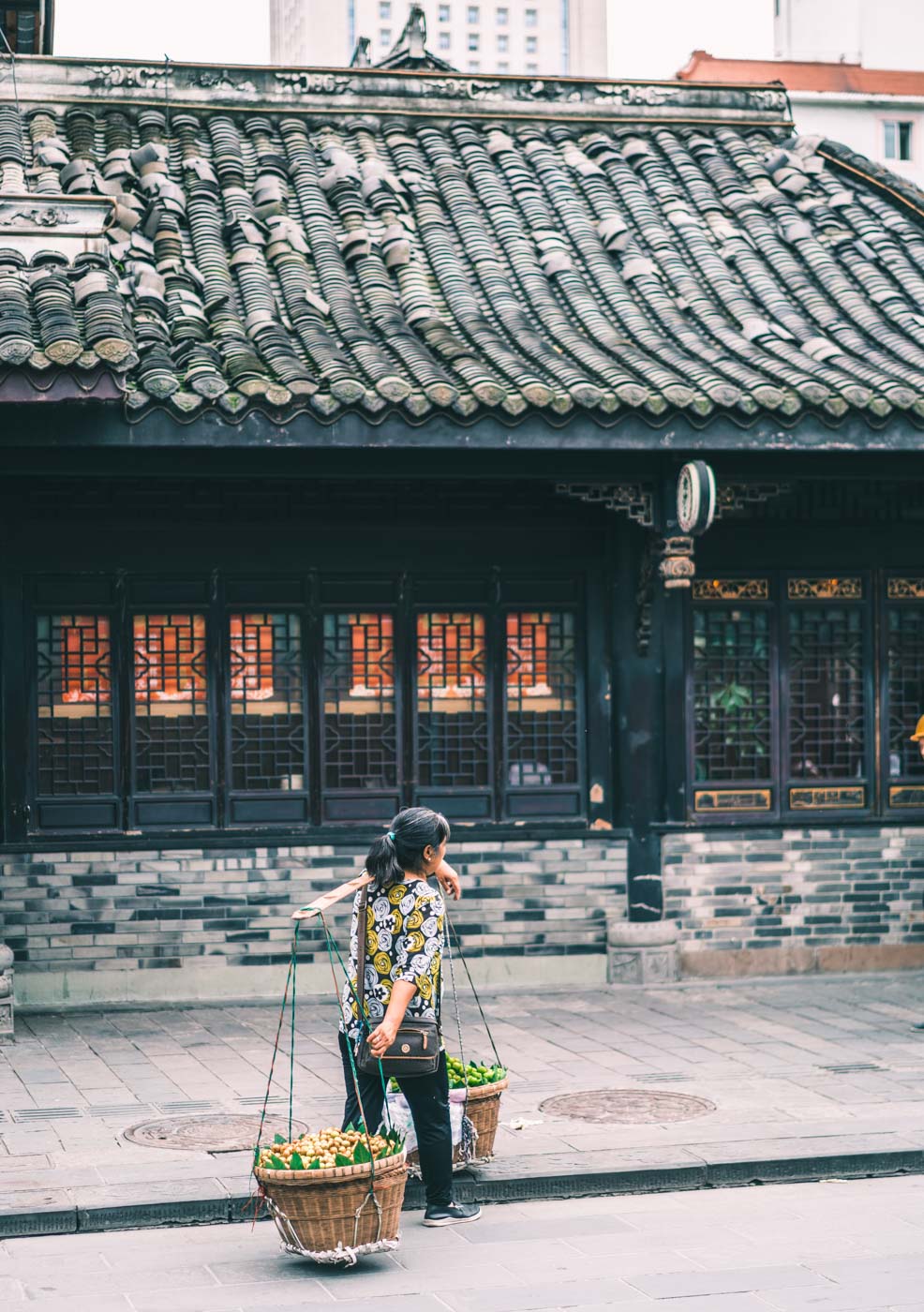
Green Design
Exploring on foot has always been our preferred method of transportation. Not only is it better for the environment than taking a taxi, and better for our health and fitness, but it’s also a great way to see parts of the city we might otherwise skip.
We explored a lot of Chengdu on foot and often found ourselves strolling through random neighbourhoods around the city. There was one thing that struck us the most about the city’s architecture and design – it was so green!
Lush green trees lined streets, and parks were the local’s favourite hangout spots. Life happens in green spaces in Chengdu.
Renmin Park (People’s Park), located in the centre of Chengdu, is a social hub for many older locals who enjoy spending time in the park playing Mahjong with friends, dancing, singing, and, of course, drinking tea.
Wangjianglou Park, Huanhuaxi Park, Baihuatan Park, Yongling Park, and many others offer residents a place to relax and connect with others and visitors a place to discover a slice of the vibrant culture of Chengdu.

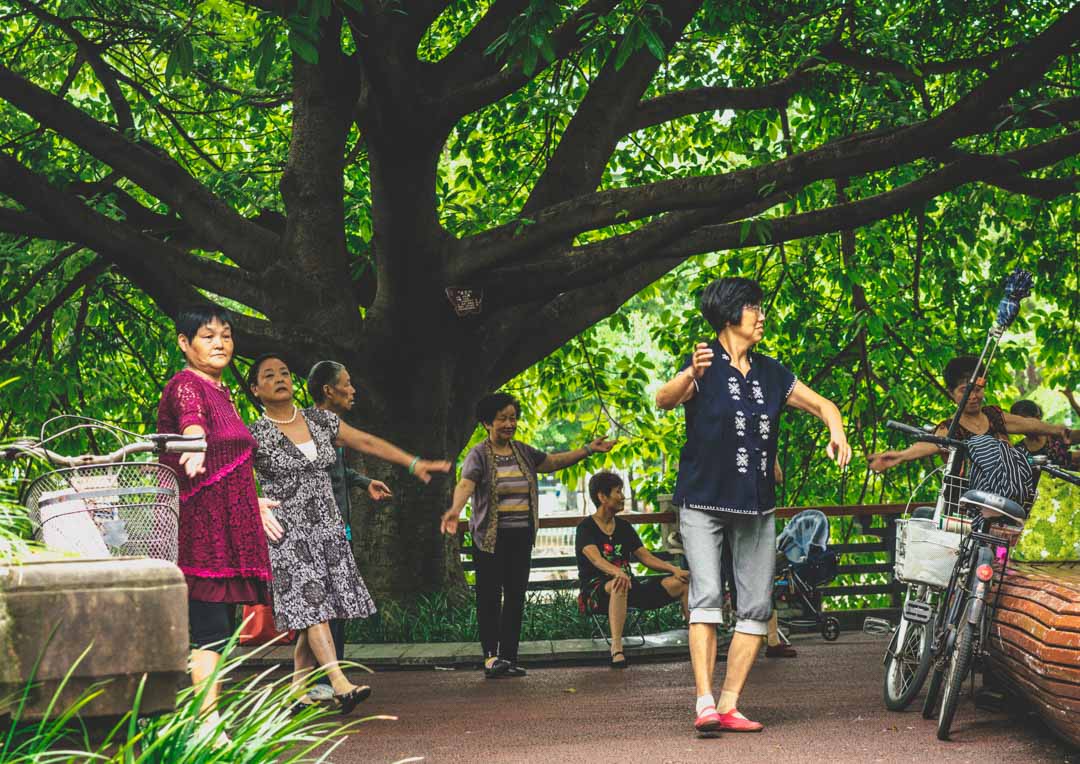
Pandas! Pandas!
Aside from the fact that Chengdu is home to Chengdu Giant Panda Research Base, the biggest facility for panda breeding and research in the world, the entire city of Chengdu seemed to be obsessed with pandas. Anyone who has ever had a chance to see giant pandas in real life will attest, they are absolutely adorable! We spent hours roaming around the Chengdu Research Base (which, by the way, is the best way to admire these amazing creatures responsibly), and we couldn’t get enough of them!
The Chengdu Research Base of Giant Panda Breeding is also home to 700 species of flora and fauna, including endangered species like red pandas, swans, peacocks, and butterflies. Pandas tend to be more active during the earlier part of the day. So, get there early!
Luckily, pandas (real, stuffed, sculptured, and painted) were all around us in Chengdu. From storefronts to menus and street-side souvenir shops, everyone seemed to think that every business is better off with a panda! And as visitors, we couldn’t help but smile at the local’s love for this adorable bear.
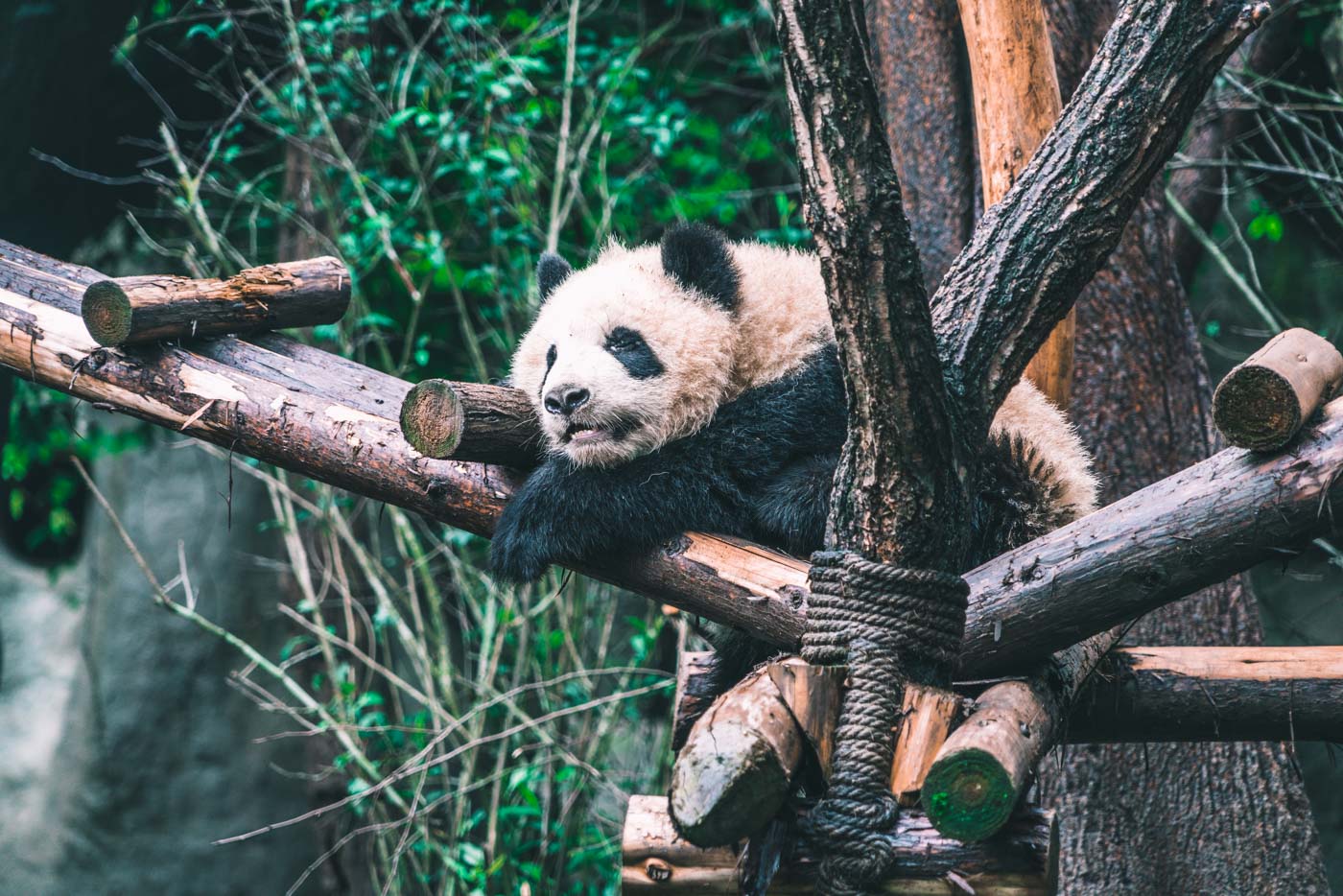
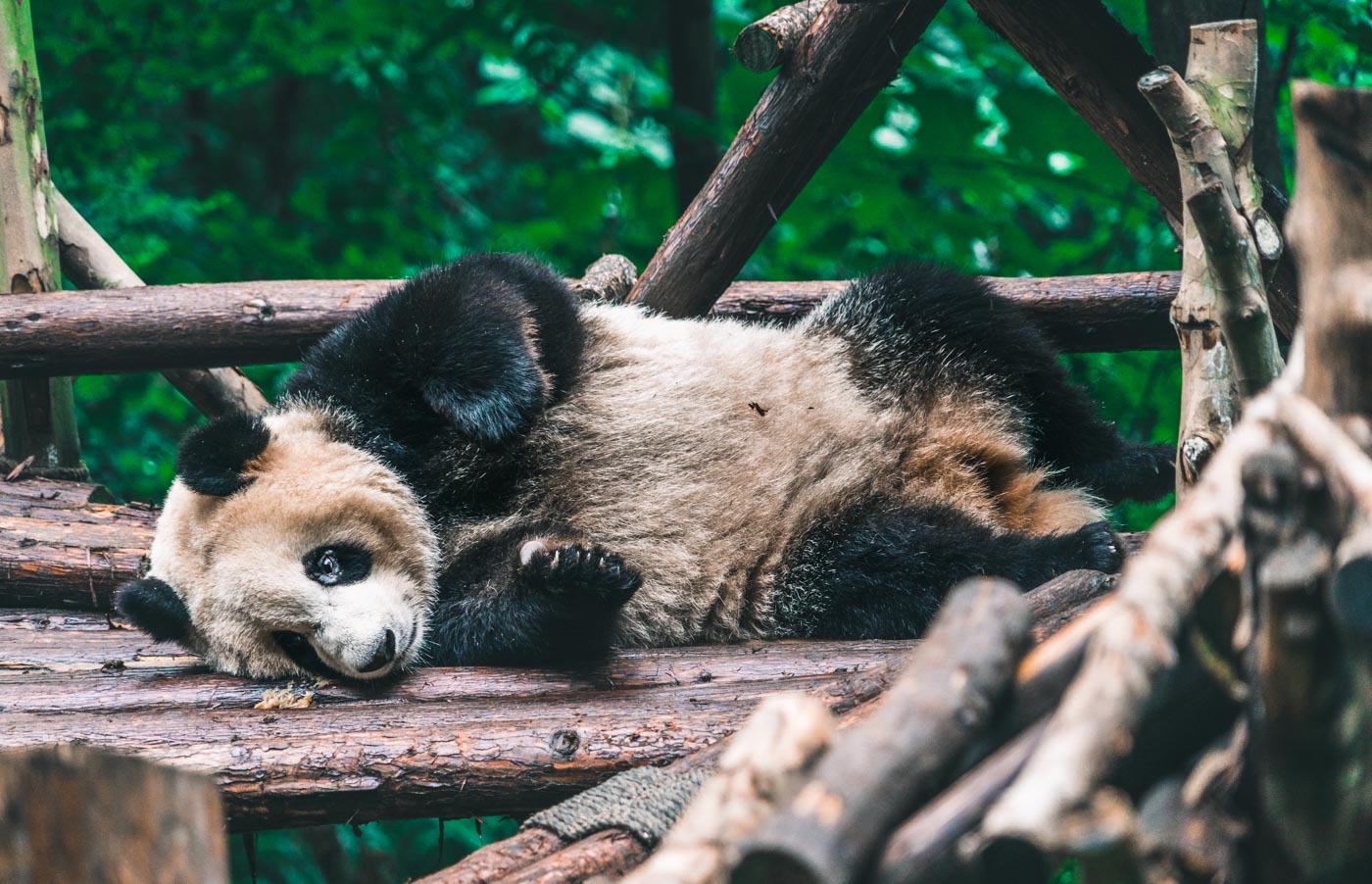
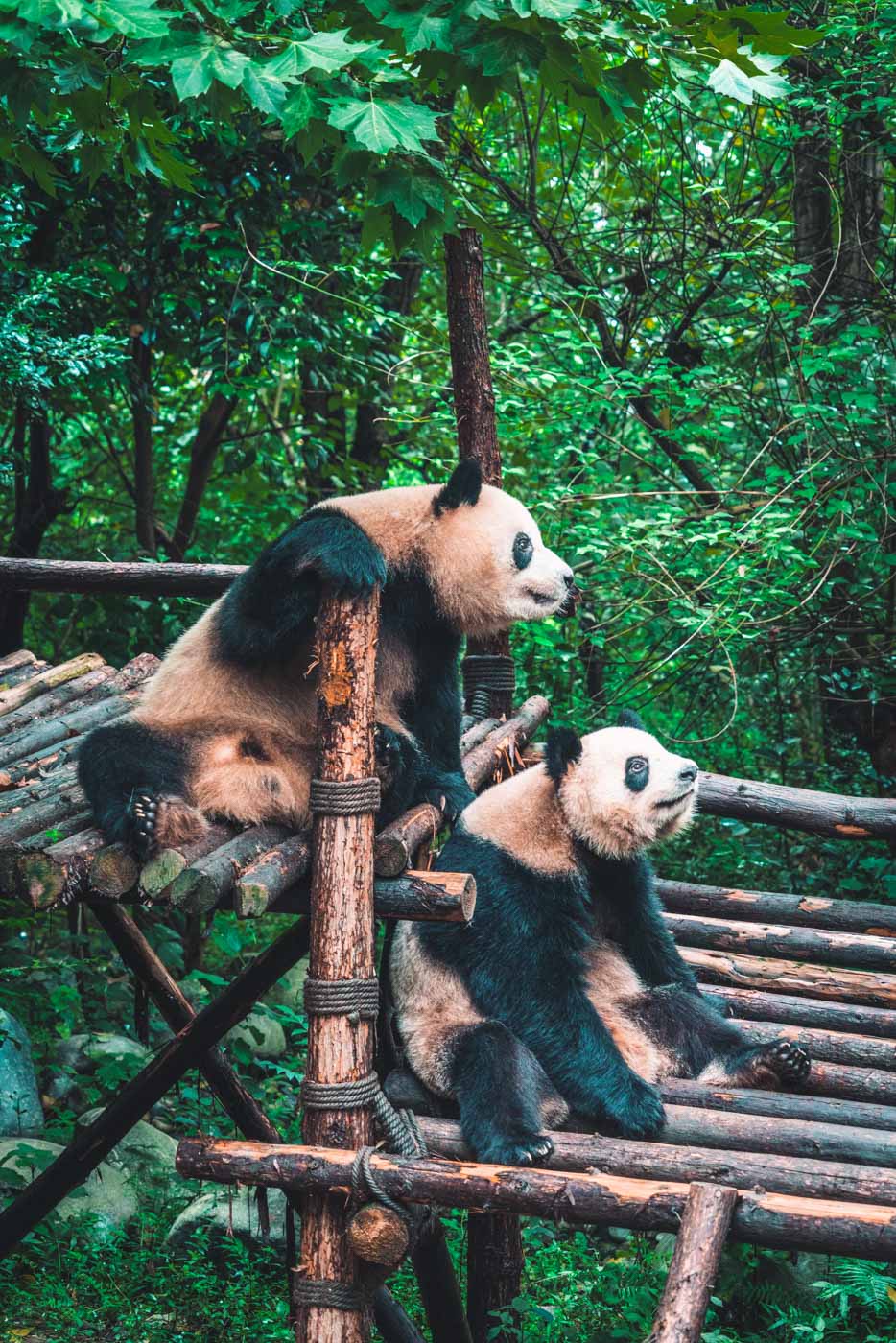
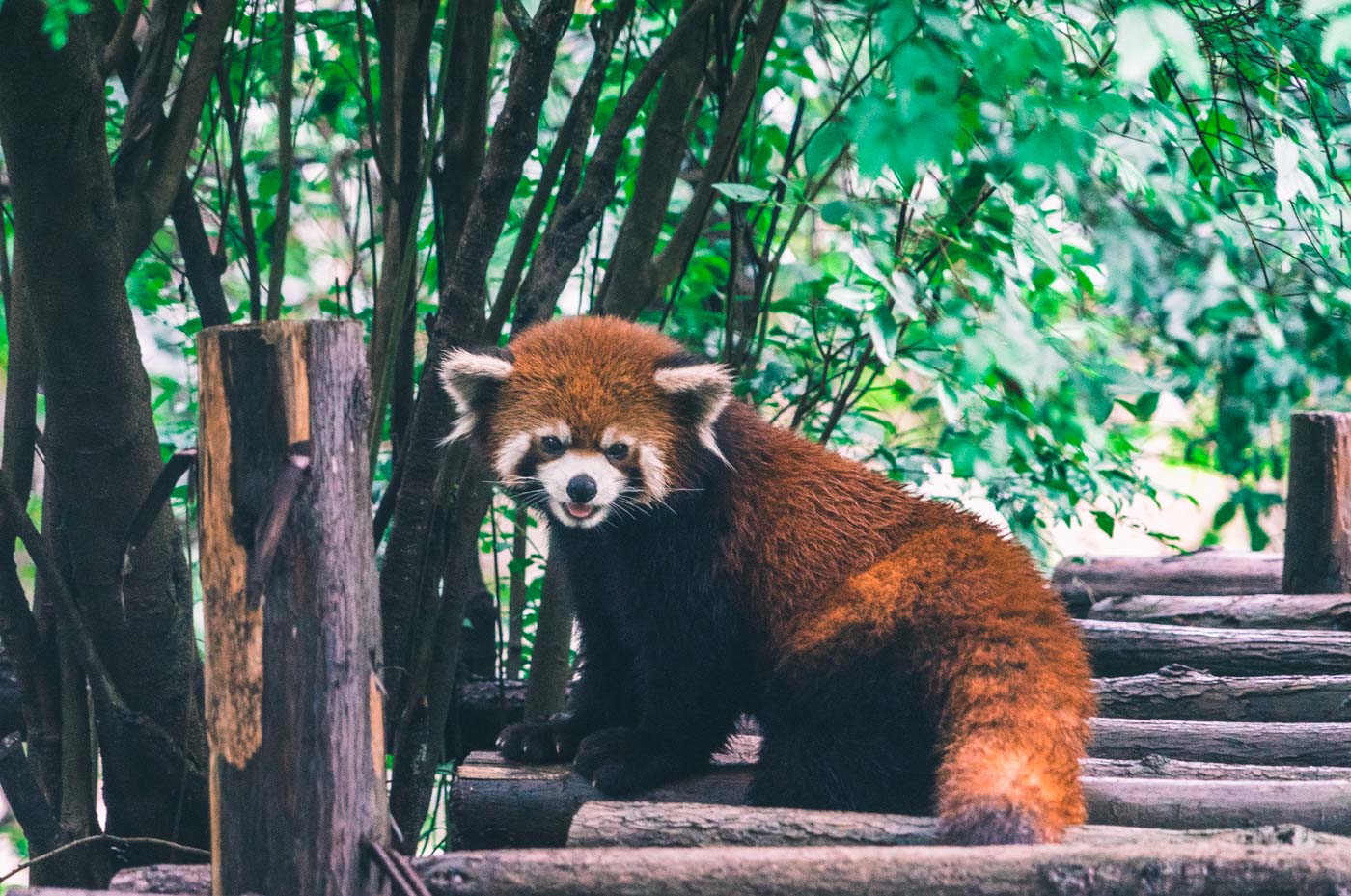
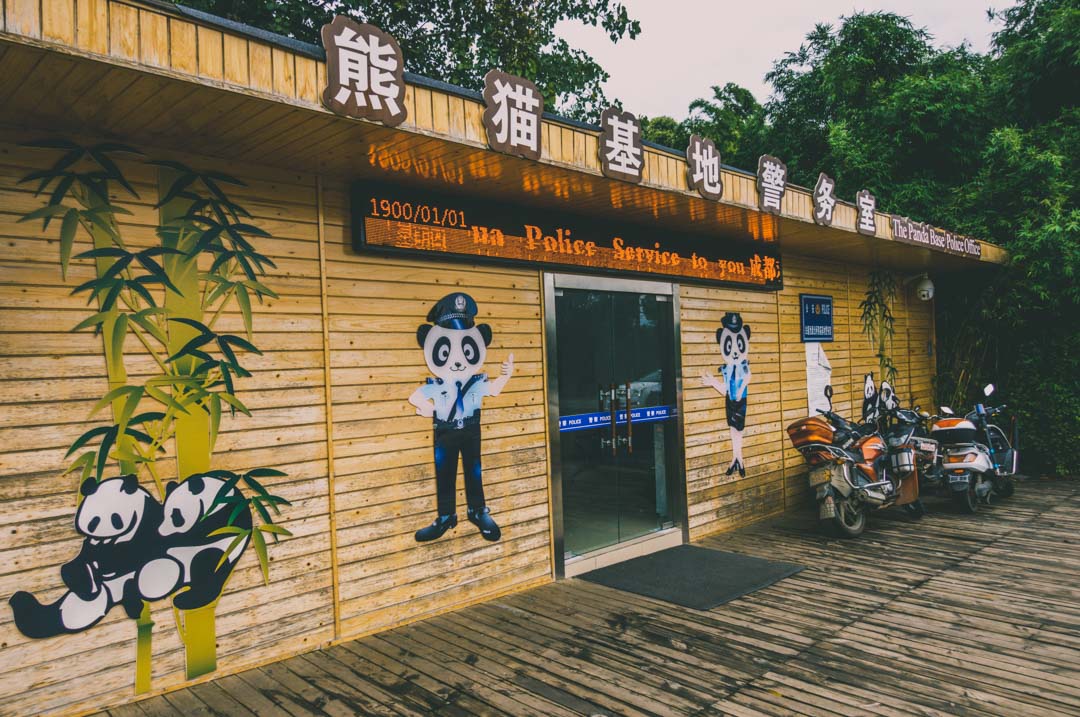
Spicy Flavourful Sichuan Cuisine
We didn’t have to look hard to find delicious food in Chengdu. Sichuan cuisine is known for its numbingly hot spicy flavours, and their famous dishes, Mapo Doufu (Mapu Tofu), Hot Pot, and Dan Dan Mien (Dan Dan Noodles), served as perfect examples of the bold flavours and pungent aromas of the region. We tried street food, dined in full-service tablecloth establishments, and popped into no-name mom-and-pop joints. But no matter where we ate and what was on our plates, our meals in Sichuan weren’t relaxing; they were character-building. They were often also the highlight of our days.
Mapu Tofu, a rich tofu dish set in a spicy oily sauce, came out as the clear winner and our absolute favourite, thanks to its unique “mala” (numbing spiciness) characteristic. Hotpot, on the other hand, proved to be a tad too much, even for spice-loving Max.
Deservedly so, Chengdu was designated a City of Gastronomy by UNESCO in 2010. The Chengdu Sichuan Cuisine Museum houses thousands of antique cultural relics related to Sichuan cuisine, and even hosts cooking classes! You’ll learn preparation techniques and the essences of Sichuan cuisine while cooking a traditional dish.
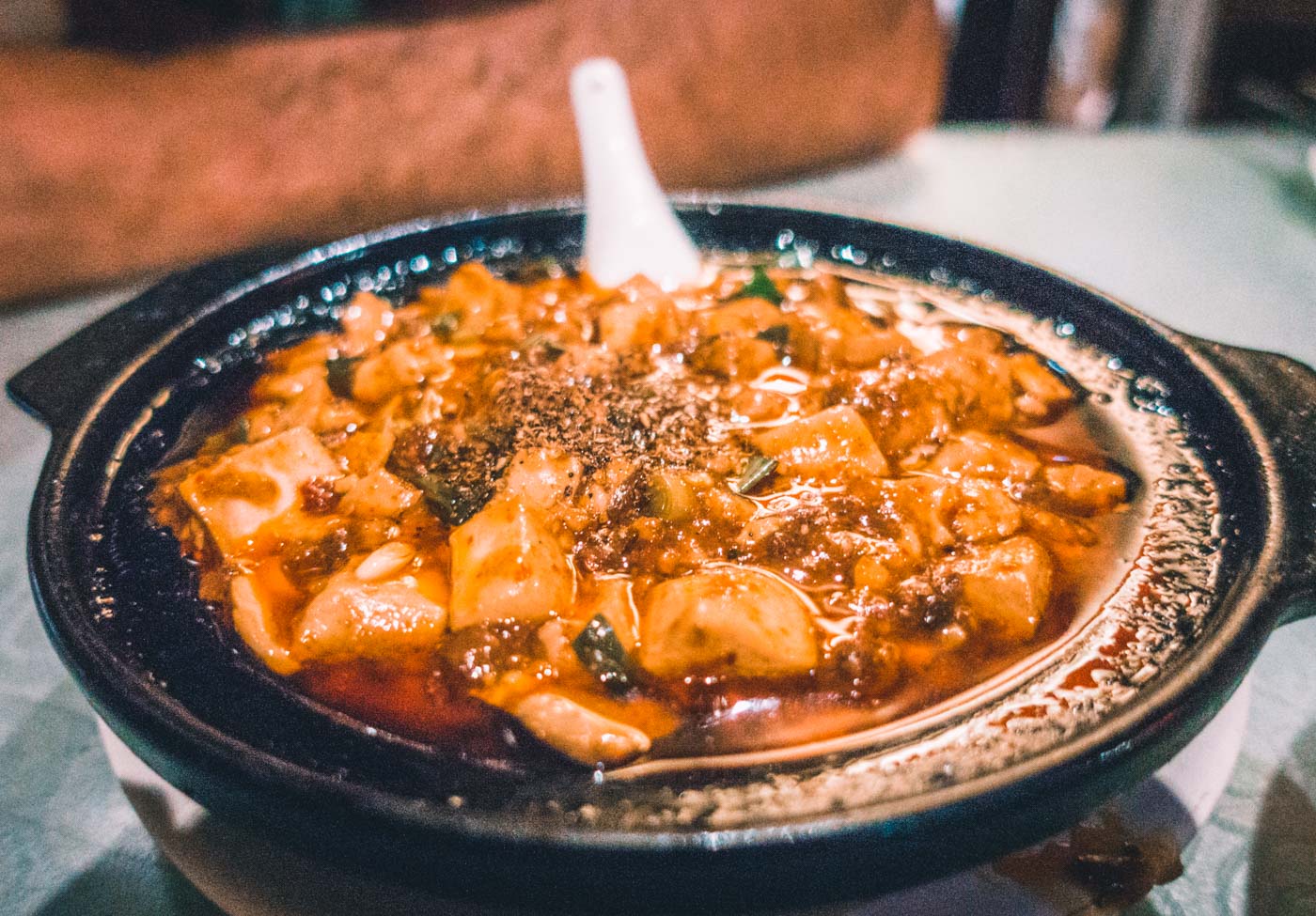
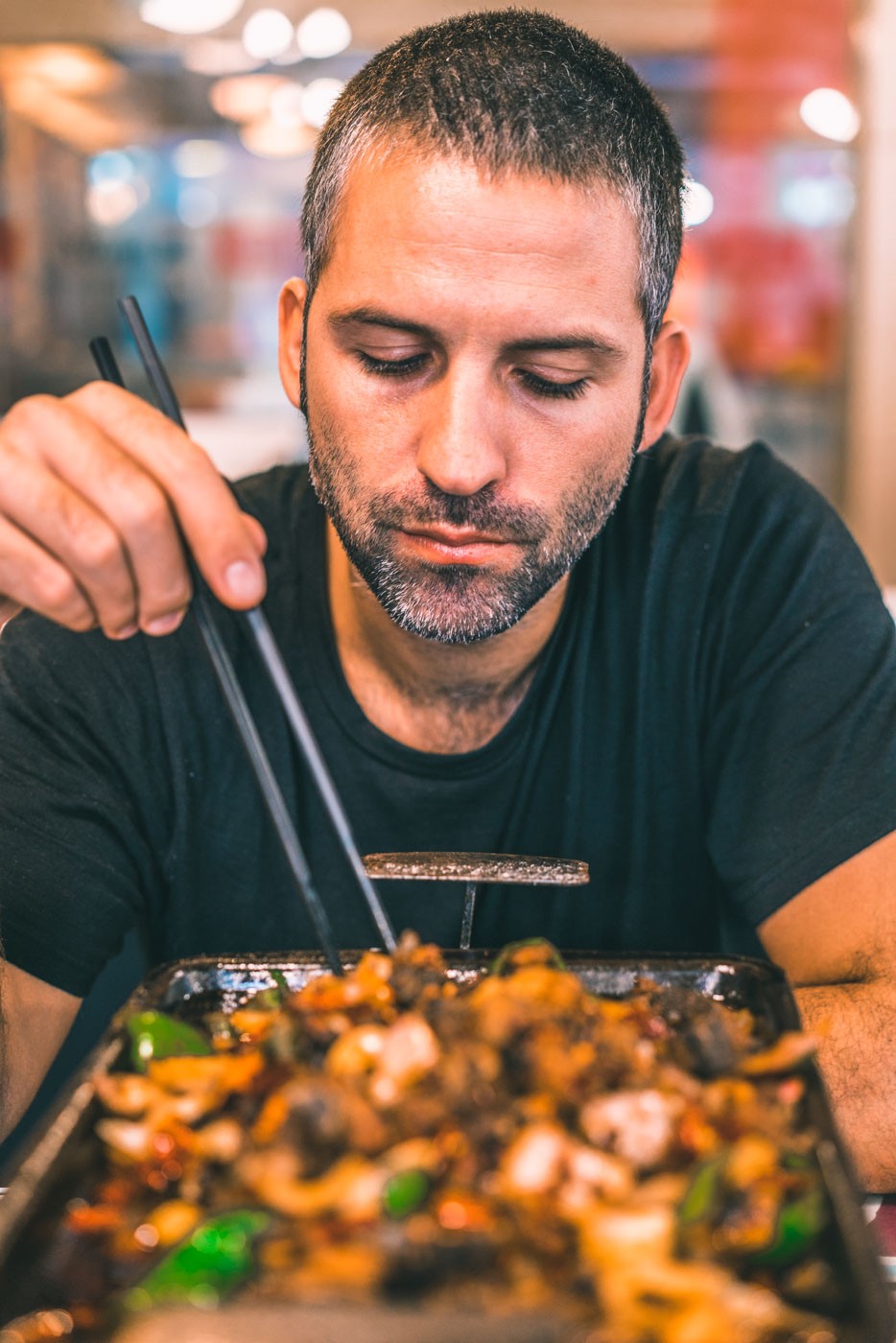
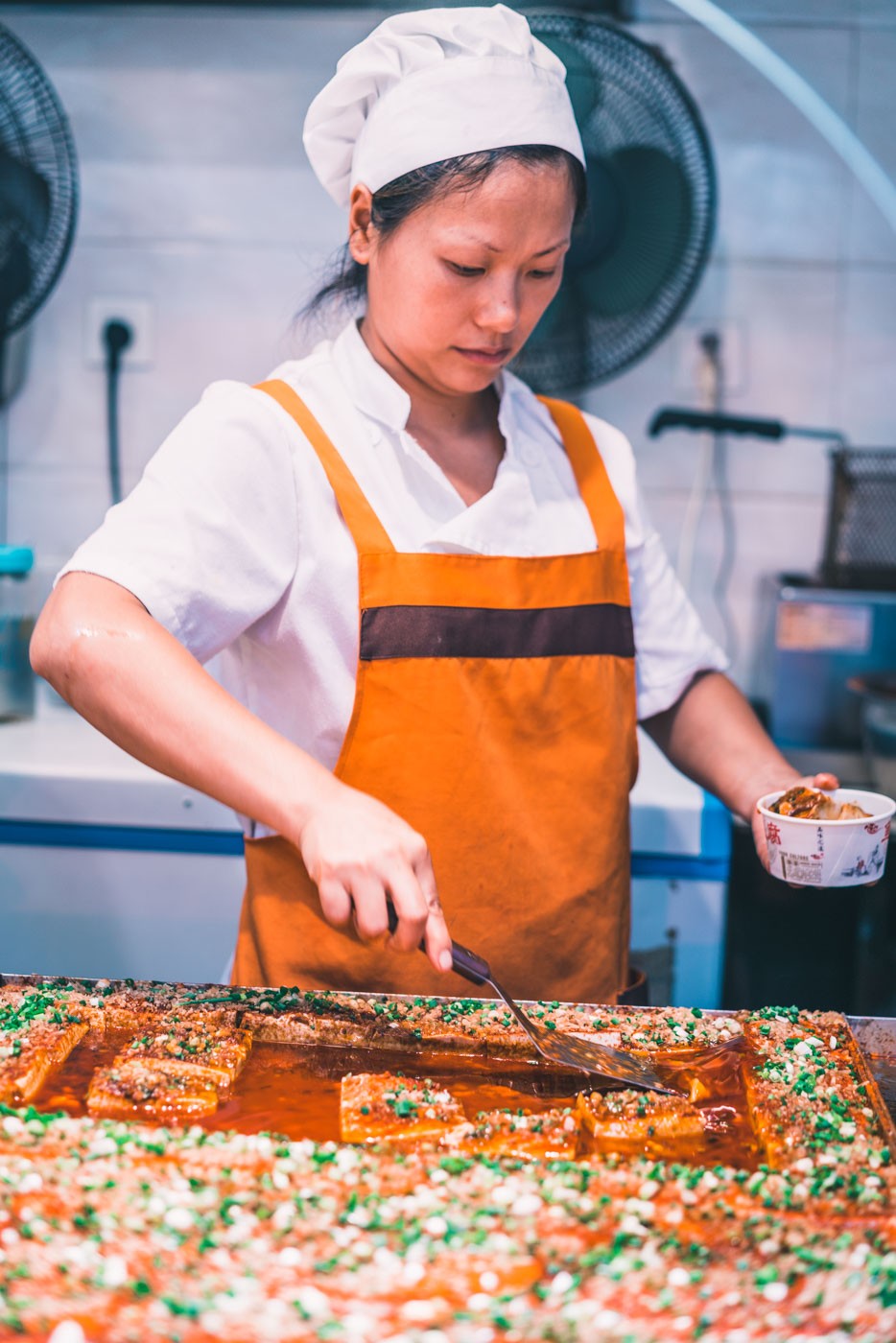
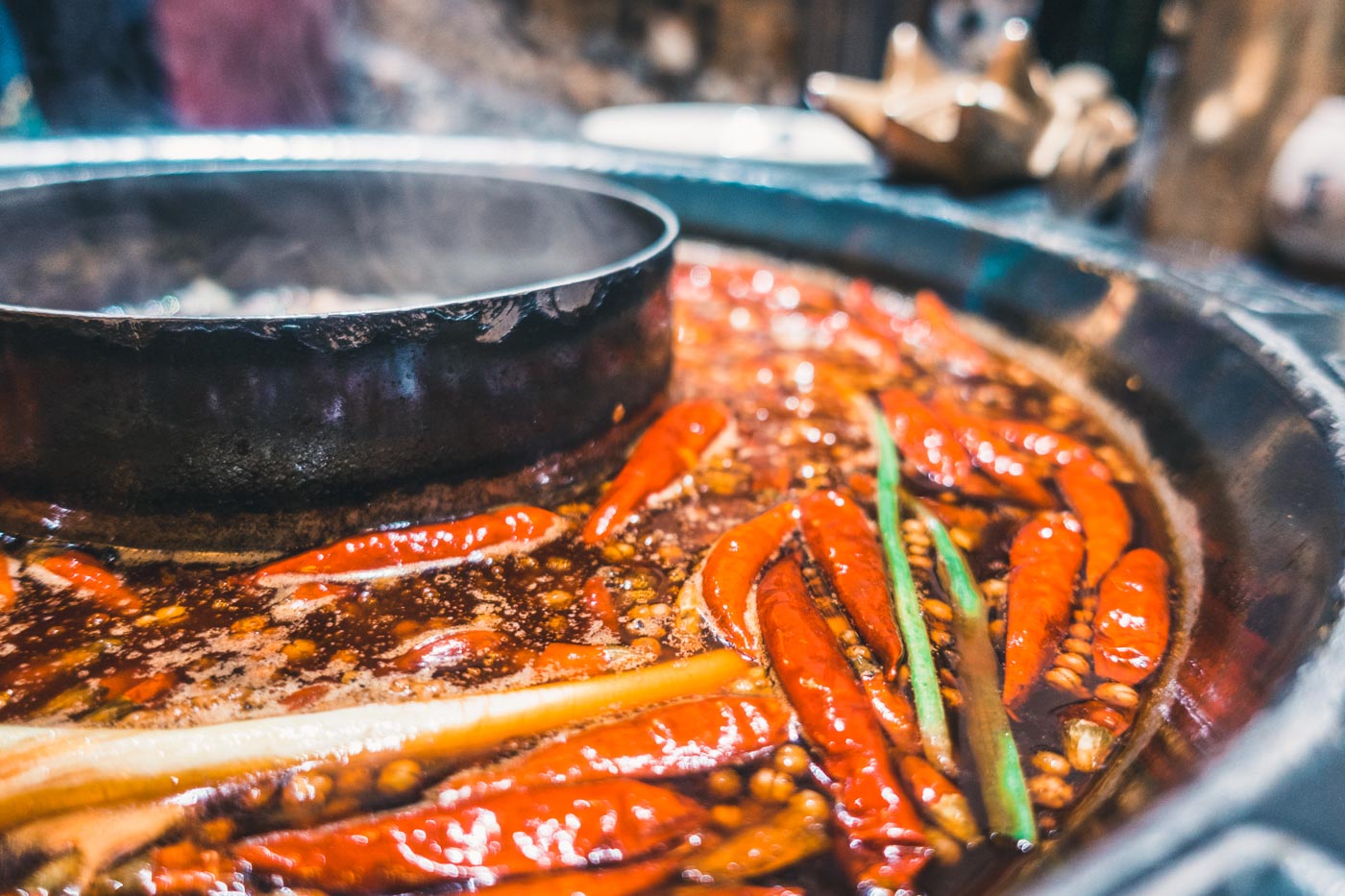
Jinli Ancient Street
Continuing on the subject of food (let’s be serious, we are closet foodies), Jinli Ancient Street, a popular hangout spot for locals and visitors, boasts one of the best local snack food markets in the city. It was another one of our favourite spots in Chengdu. The street itself is a quieter and less hectic version of Beijing’s Nanluoguxiang Hutong, filled with shops, local artisan studios, boutique hotels, beautiful old-fashioned buildings, and many, many food stalls.
Prices were very affordable (just $1-2 per dish), and servings were small, so we were able to try a ton of unique dishes. Some, like the rice paper spring rolls, dumplings, and spicy tofu, were fantastic; others, a bit too much, even for our adventurous spirits (Bunny heads? No, thank you! We like ours fluffy and alive)
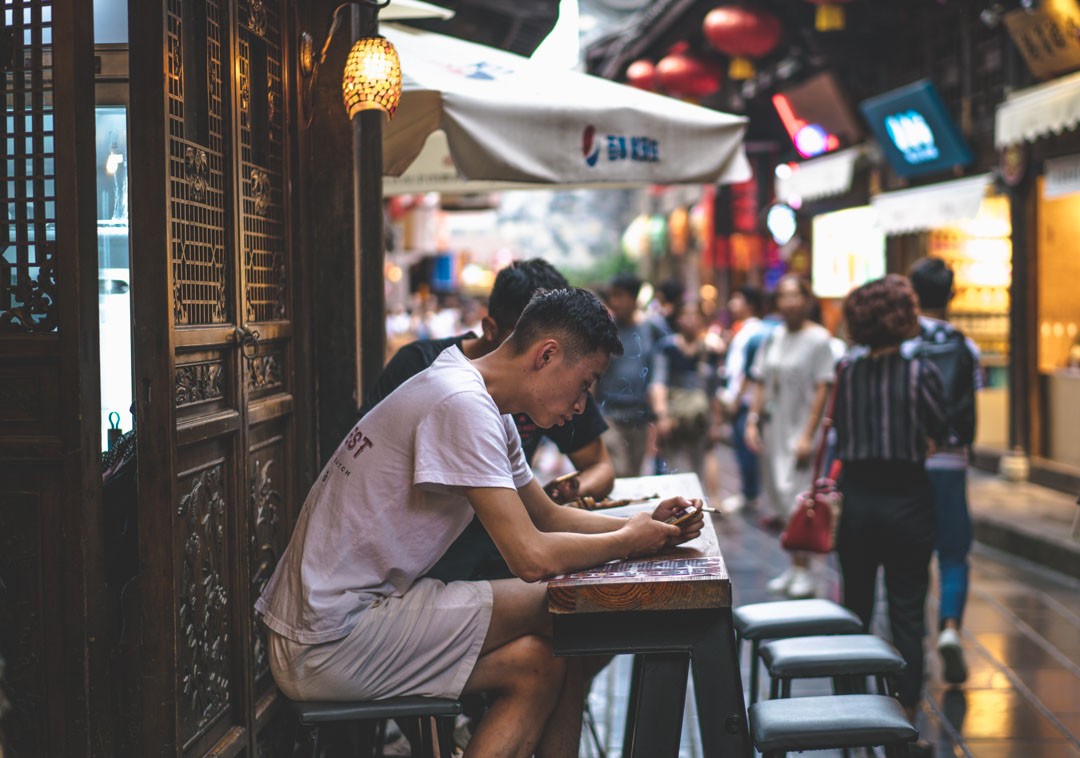
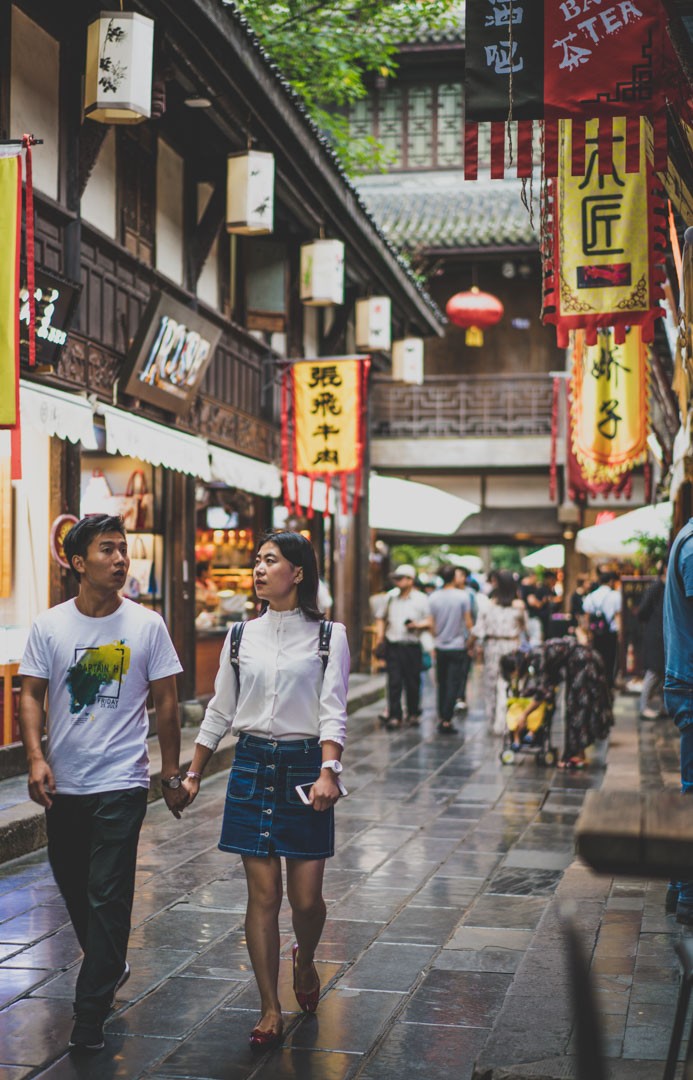
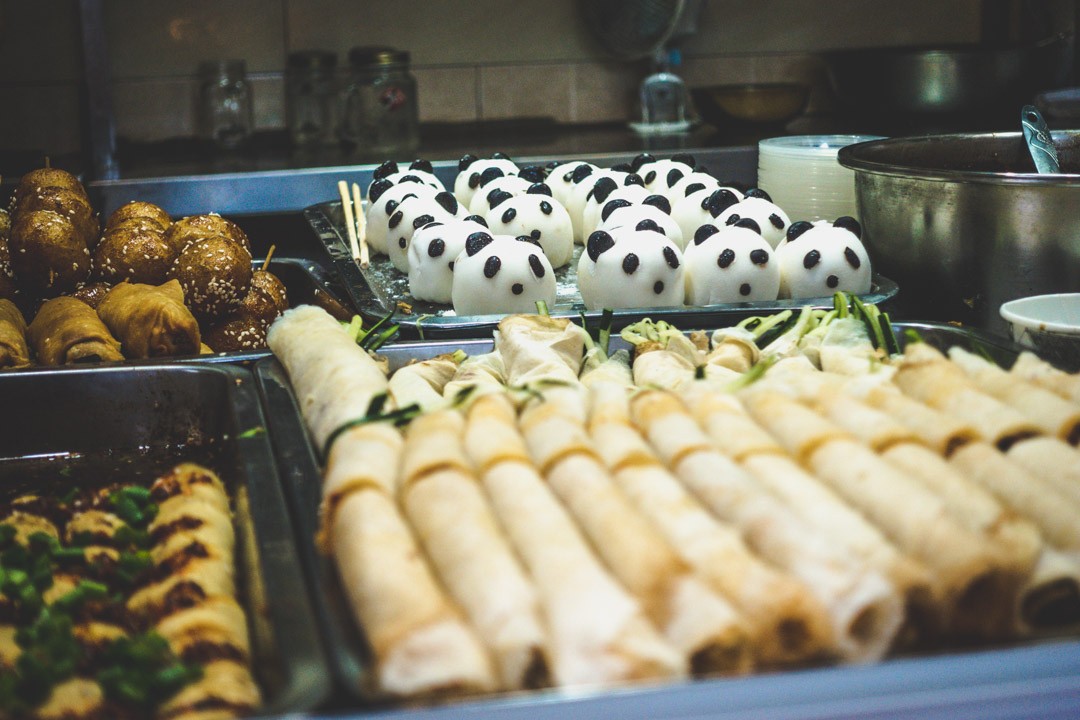
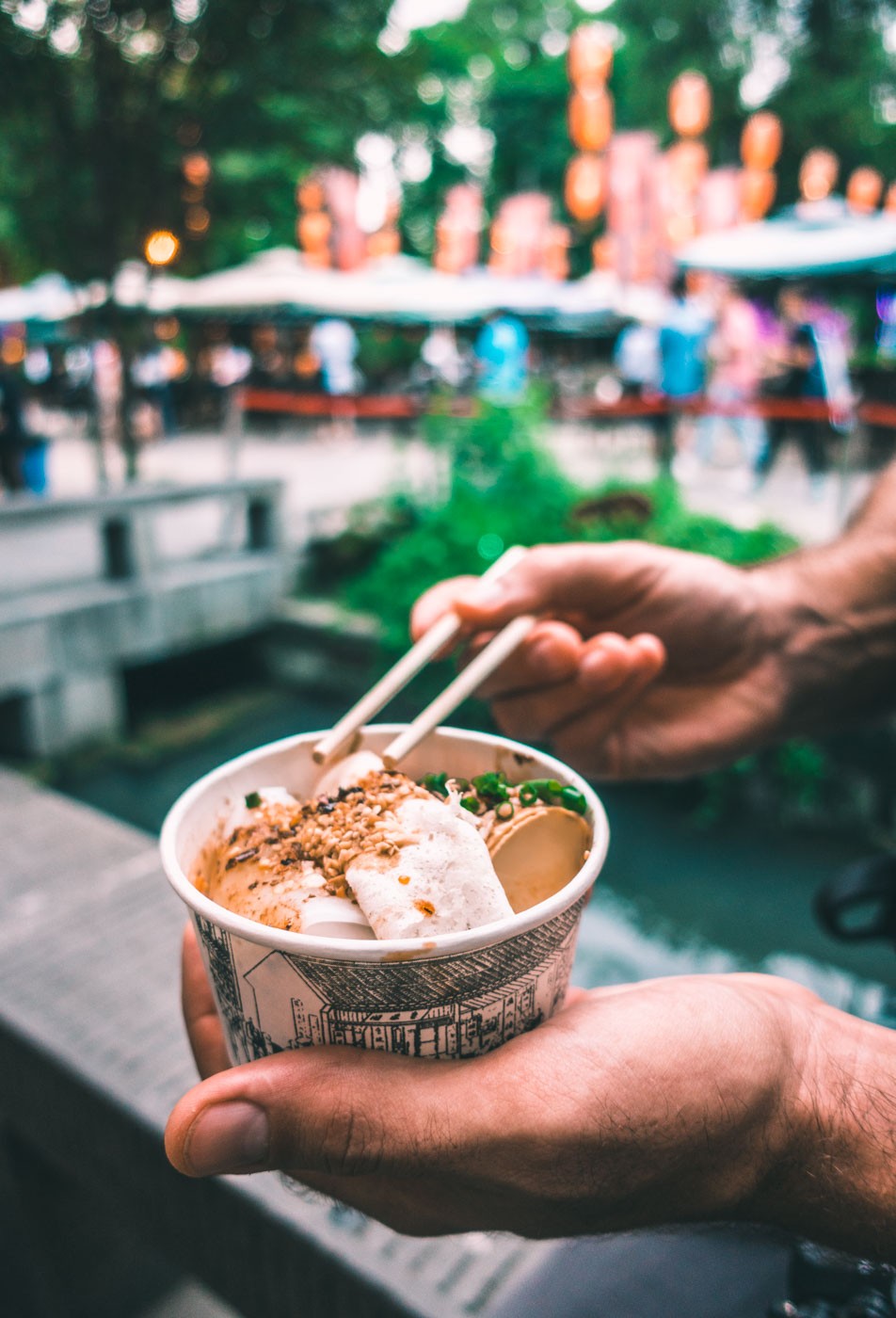
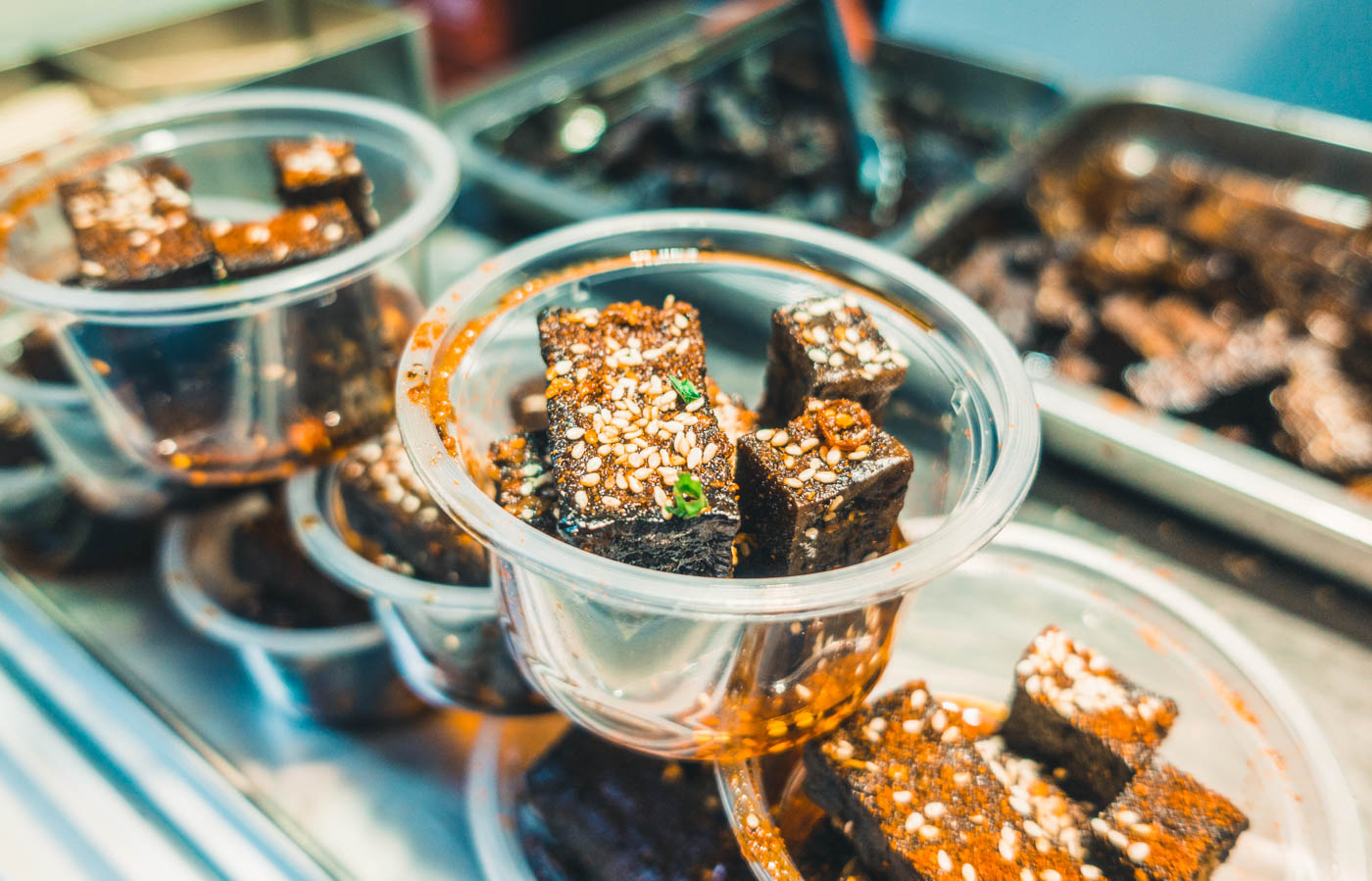
Temples And Tea Houses
China’s spiritual beliefs, a complex blend of Confucianism, Taoism, and Buddhism, and its beautiful temples have long been an attraction for travellers from all over the world. And while we don’t necessarily subscribe to any particular spiritual teachings, we still enjoyed visiting some of Chengdu’s beautiful temples, the Baoguang Temple, Daci Temple, Zhaojue Temple, and Wenshu Temple.
Wenshu Temple was the most impressive and is said to be the most used Buddhist Temple in the ancient town. It boasted beautiful architecture and had a series of halls, pavilions, and gardens with more than 450 Buddha statues and other precious relics. In addition to the hall and gardens, the temple also had a vegetarian restaurant and a lovely tea house, where locals were chatting while sipping on jasmine tea.
And, of course, tea culture wasn’t limited to just temples in Chengdu. China’s thousand-year tradition of drinking tea was evident across the entire city, and it seemed to be a lot more popular here than it was in Beijing or Shanghai. We thoroughly enjoyed it!
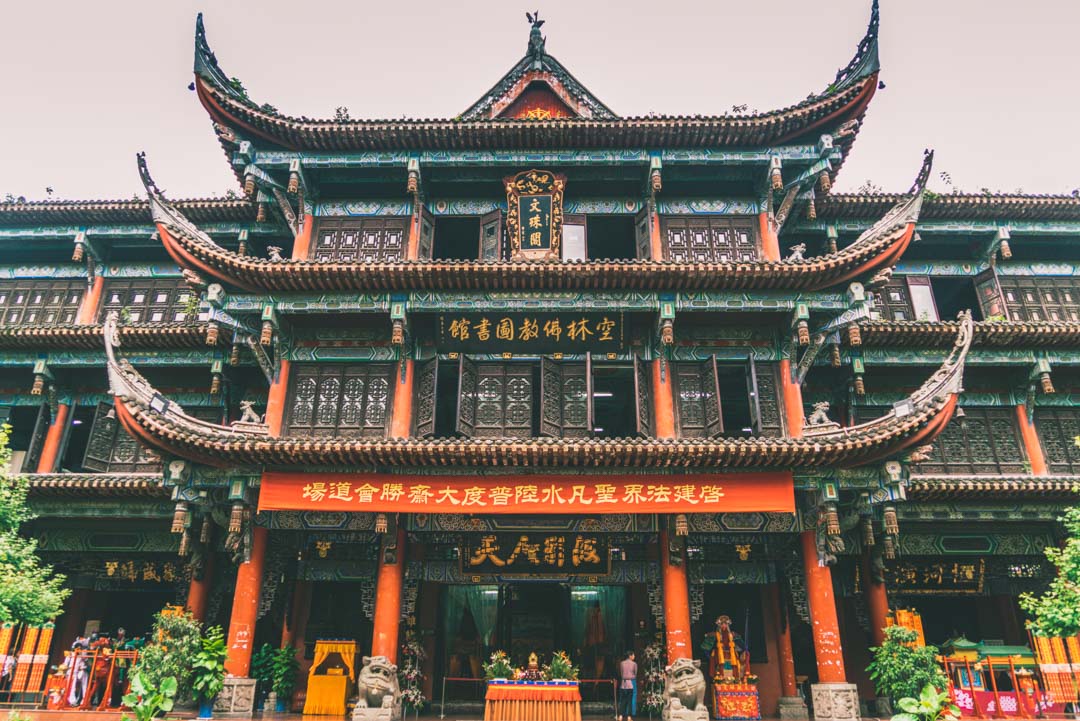

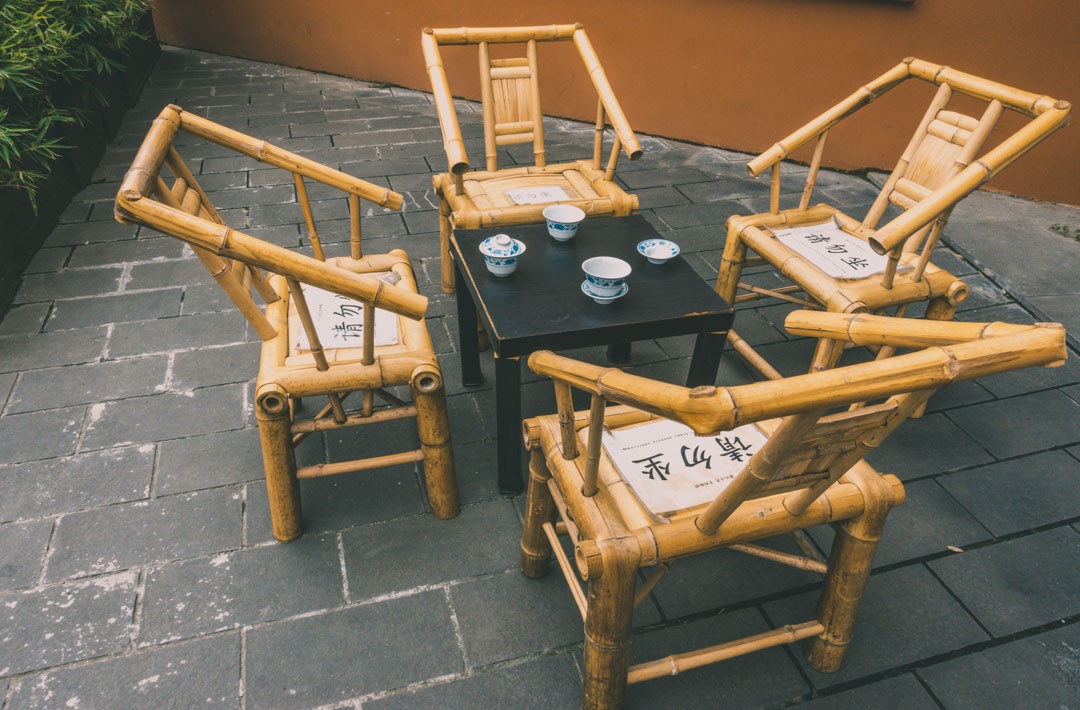
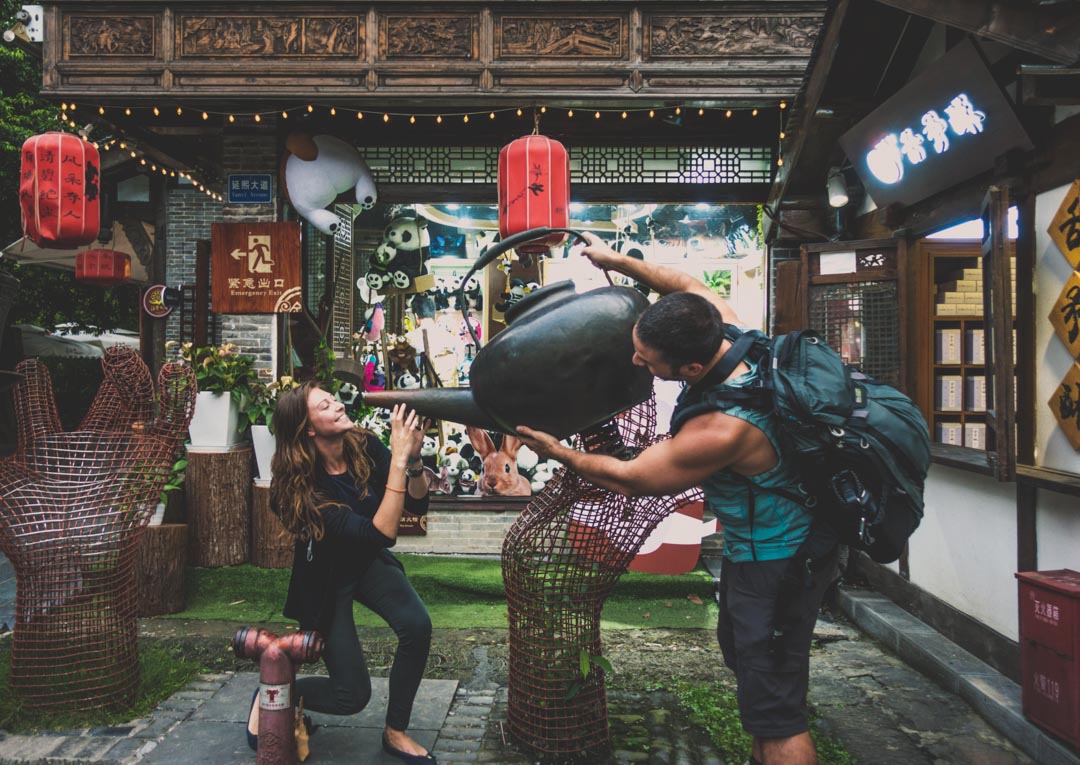
Watch A Sichuan Opera
Don’t miss a chance to take in a traditional performance at an opera house while you visit Chengdu. This Sichuan style of opera has several components, its own style of music, and is full of vivid colours and elaborate costumes. You might see an enactment of a local folk tale, a mask-changing performance, and fire breathers.
Explore The Wuhou Shrine
Located in the southwestern part of downtown and close to Jinli Ancient Street is the Wuhou Shrine, a temple complex that dates back 1,800 years. Built to memorialize a king and minister, this complex includes a mausoleum, three temples, and a gorgeous courtyard. The architecture, sculptures, and gardens of the complex are stunning and make for a fantastic backdrop for photos.
See The Anshun Bridge At Night
This ornate bridge crosses the Funan (Jin) River near the Hejiang Pavilion. The original bridge was constructed in 1746, but a flood destroyed it in 1947. A replacement was built, and now the covered bridge is home to a traditional Chinese restaurant, and several bars, teahouses, and other hangout spots have popped up around the bridge. At night, the bridge lights up and is just gorgeous over the shimmering waters of the river. This example of traditional Chinese architecture is a popular nighttime attraction, and you can take great photos of the bridge from lots of places along the river.
Visit The Jinsha Site Museum
Delve into the ancient Shu Kingdom at the Jinsha Site Museum. This archaeological site was once the urban centre of the Shu civilization and has yielded the densest collection of ivory, gold, and jade artifacts dating to the time period. The ancient Shu were a Chinese culture that thrived in the Yangtze River valley from the 12th to 7th century BCE.
Covering an area of 300,000 square metres, the complex includes an archaeological site, a world-class museum, and a national research education base for grade school and postdoctoral students.
Luodai Ancient Town
Located on the outskirts of Chengdu is Luodai, a small town full of historic buildings dating back to the 1600’s. The picturesque town’s main street is about 1 km long and is flanked by iconic Chinese architecture that houses restaurants, shops, and teahouses. On Sundays, this pedestrian-friendly town can get pretty busy because it’s a popular weekend destination for locals.
Day Trips From Chengdu
After exploring the city for a few days, we were keen to get away from the city buzz. Luckily, Chengdu has no shortage of adventures and beautiful natural attractions lying within just a few hours of the city.
The easiest to get to was QingChengShan (Qingcheng Mountain), an important site for Taoism religion and a beautiful mountain with an extensive network of trails dotted with Taoist temples. Qingcheng Mountain and the historic Dujiangyan irrigation system were designated as a UNESCO World Heritage Site in 2000, as well as a State Priority Protected Site.
The back side of the mountain, meant to be a better option for hiking, was unfortunately closed during our visit in August 2017, but the front side was opened and offered well-labelled trails and plenty of opportunities to connect with nature – a real change from the pace of the city.
Emei Shan (Mt. Emei), considered to be one of the four holy Buddhist mountains in China, is another popular getaway from Chengdu. China may have an abundance of beautiful mountains, but all accounts seem to point to the fact that Emei Shan offers one of the most spectacular views of them all. Unlike Qing Cheng Shan, it’s not easy to tackle Emei Shan in just 1 day. A trip to Emei Mountain is best done as a 2-3 day getaway, with plenty of time to enjoy the scenery and hike to the top.
The Leshan Giant Buddha is another popular destination drawing visitors away from Chengdu. This ancient man-made sculpture carved into a cliff along the river is considered to be the biggest Buddha statue not only in China but in the world. A visit to the Leshan Giant Buddha is easily combined with a trip to Emei Shan, making for a great 2-3 day getaway from Chengdu.

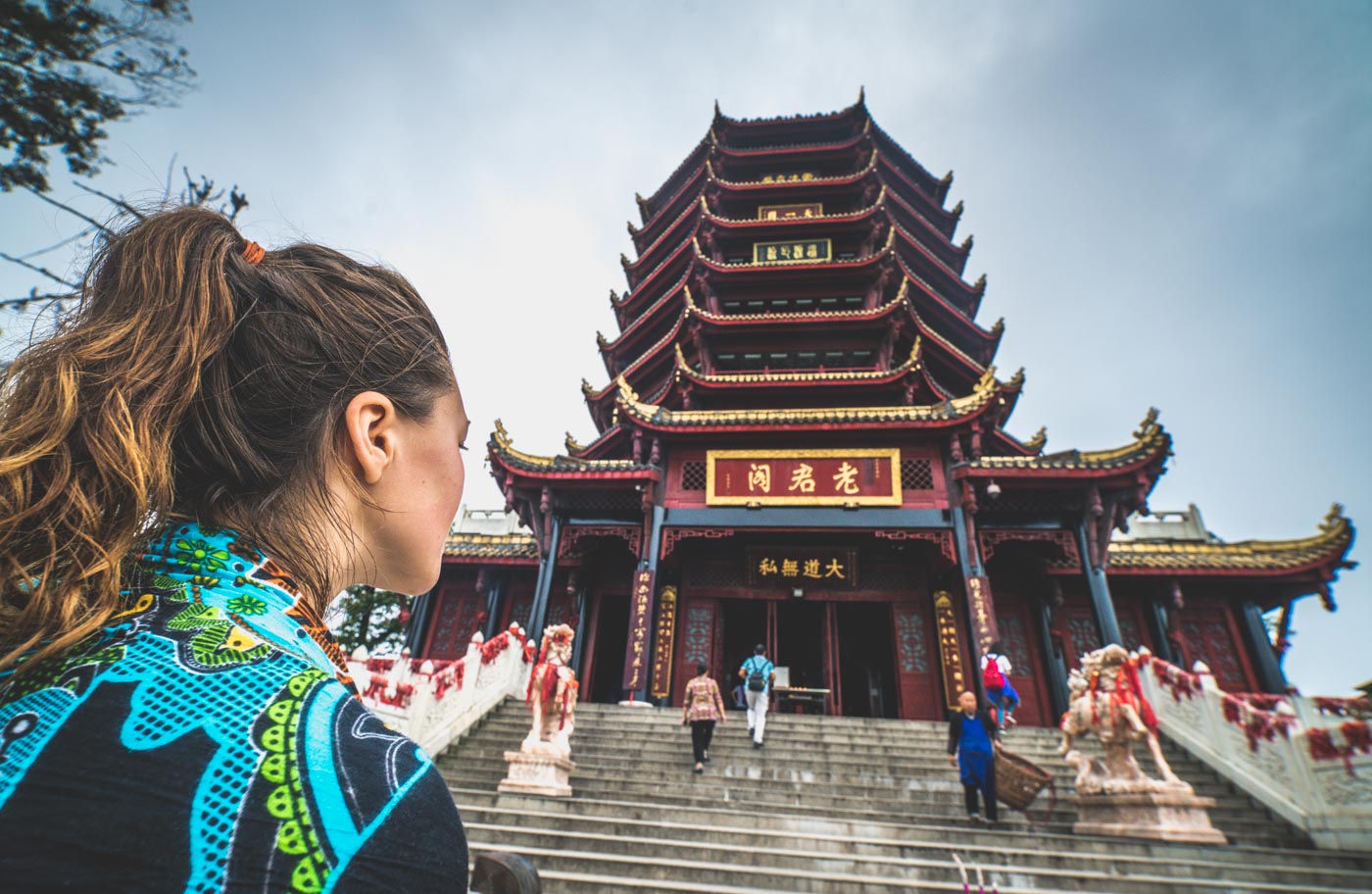
Hip And Modern
While there was lots to love about Chengdu, for us, it really wasn’t one thing or one particular attraction; it was the overall feeling we got while hanging out in Chengdu. This city felt hip; it felt modern and vibrant.
Walking along the Renmin Road in the heart of the city, we were fascinated by the bright lights and the happening ambiance of the city centre. Shops, restaurants, and mega malls lined the street. The air was filled with an aura of possibilities. It seems like good things were happening for the residents of Chengdu, especially for the young and the educated, those who make up a portion of China’s fast-growing middle class.


Today, more than 250 of the Fortune 500 companies have offices in Chengdu. The city’s population is growing, and so is domestic and international tourism. It’s time for Chengdu to get noticed.
Have You Ever Traveled To Chengdu? Did You Enjoy Your Visit To Sichuan Capital?
READ NEXT: Things to Do in Beijing, China


Thanks for your great introduction, I feel exciting to go.
hi! I am so curious if you could share, did you get the sense it was a dog friendly city? we might need to make a work move but are concerned with our 55 lb mix pup. who’s super sweet. thank you! great post!